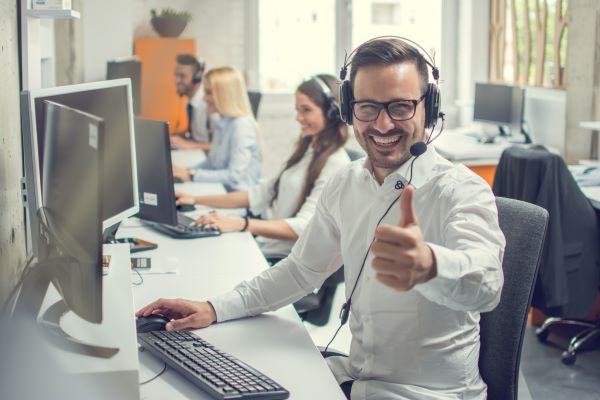Sales Closing Technique Developed
From an Old Sales Trick

A sales closing technique developed from an old sales trick used by direct B2C sellers for sales including: home improvement sales, selling household products, holiday homes and time share sales, and as a way to close more car sales.
The old - My manager would like your feedback trick - has been adapted and can now be used in a genuine and more ethical way to gain real feedback, find out why a prospect didn't buy, and get a second chance to close a sale.
On this page, see why the technique was so successful and the psychology behind it, and how you can use it to increase sales closed.
I'll show you how my teams have developed the closing technique and how you can adapt it to suit your sales role.
The Old Hard Sell Sales Closing Technique
This hard sell sales closing technique was common a few decades ago, most B2C prospects were not familiar with the trick close, and at the time it was the only style of sales training I and most other sales people received. The technique used to close the sale was known as the manager call and was used after a failed sales pitch.
My manager would like your feedback - Sales closing technique
The - My manager would like to talk to you - sales closing technique was used at the end of a sales pitch when the sales person had not succeeded in closing the sale.

The seller calls their manager, or a colleague pretending to be their manager, and tells the prospect this is a routine customer service quality check.
If the sale is in a retail outlet such as a car sales showroom, the same process is followed but in a face to face conversation between manager and buyer.
The call or conversation is held in front of the prospect and starts with the manager asking the sales person for background information, This gives the manager, or accomplice, an understanding of the outcome and why the prospect didn't buy.
The information indicates to the manager which sales closing technique will be appropriate when they speak with the prospect under pretence of asking for feedback on the salesperson and their presentation from a customer service angle.
The sales manager then asks to speak to the prospect
The sales manager asks how the sales person conducted themselves, what the prospect thought of the benefits presented, the price quoted, and why the prospect didn’t buy. Then the manager tries to close the sale again from a new angle. They may drop the price or change the offer and give various reasons for this such as:
- The sales person is new and got the pricing wrong.
- To thank the prospect for giving feedback.
- The seller has given incorrect information or not made some points clear.
- There has been a cancellation and there is now an item or timeslot available.
I’ve even heard sales managers criticising the sales person in an attempt to side with the prospect and create a reason to drop the price.
The psychology behind the sales closing technique
The psychology behind this closing technique is that by putting distance between the sales person and the manager, the manager moves closer to the prospect. They start to form a relationship with the prospect by alienating the sales person.
The aim is for the prospect to think the sales manager is honest and trustworthy as they are willing to highlight the sales persons lack of competence. The prospect expects the sales manager to defend or complement the sales person. Even if the salesperson had done something wrong it would be more usual to chastise the seller privately afterwards.
The sales person plays their part by humbly apologising for whatever the manager accused them of doing wrong.
A gap between sales person and prospect grows and the relationship between manager and prospect is built. The manager begins a new covert sales pitch. If the sales manager is skilled in this sales closing technique they go through the stages of the sales process disguised as a customer service call and make special deals as compensation for the poor service, misunderstanding, or incorrect information given earlier.
Using this closing technique meant that every time a sales person didn't get an order there was a second attempt to close the sale.
Adapt the Sales Closing Technique for Your Role
Used as above the sales technique is just an underhand way to gain a second chance to close a sale. Buyers, even B2C prospects, are a lot more knowledgeable now and many will see straight through the deception.
So, how can this old, devious sales closing trick be adapted to a modern sales world and turned into an honest sales closing technique?
You can adapt the technique to close sales and develop an ethical model that does actually capture valuable information on why sales don't close and the reasons prospects don't buy. With an open conversation that builds the relationship with the non-buying prospect, you will also get a genuine opportunity to close more sales.
It takes very few resources to put this sales technique into place, it will work with just 2 people partnering up to call each others prospects or talk to them face to face in retail show rooms. or you can invest in a full team of follow up callers.
Like all good sales training your follow up conversations will have a process, a pattern to follow. The first options to consider are: where and when will this conversation take place?
Where & when to follow up on non-closed prospects
Will the conversation with prospects that have not bought from you take place face to face or over the phone and online? And when will it happen, straight after the sale has failed to close, or as a customer service follow up at a later time or date?
This will probably depend on where the first sales meeting takes place. If it's face to face at your sales outlet then it makes sense for the second conversation to happen towards the end of the sales process as the attempt at closing the sale fails. For remote sales it makes sense to use a phone call. The call can be straight after the sales attempt or at a later date as a follow up call.
The reason for the call or conversation
What will be the reason for the second conversation and who will be the person talking to the prospect?
The second person could be a sales manager checking on their staff's performance or a customer service manager gathering feedback, or something in between. The person could be an expert on a product or service the prospect expressed an interest in.
The 2nd person could be a finance expert that may offer a lower cost way of buying the product. An expert on a particular product model or its installation, or a more experienced colleague with fresh ideas on giving the prospect what they want.
The key is to create an angle, a legitimate reason for the conversation to happen and the approach it takes to gather information on why the prospect didn't buy. You could even try an honest straightforward question that asks why the prospect didn't agree to place an order. You may decide on the chastising of the sales person model, but that is a bit dated nowadays.
You may decide not to try to close the sale again unless an obvious opportunity presents itself and use the 2nd conversation to gather important information that helps close future sales and develop the sales offers to customers.
The New Sales Closing Technique
When you have selected when and where the 2nd conversation will take place, the title of the person and the reason for it, you can then follow the usual sales process. After the introduction and reason for the conversation there will be questions to gain the required information, just as you do on a sales call or in a sales meeting.
You then present back the best option for the prospect's requirements and test their agreement. This is followed by another attempt at closing the sale.
This sales technique gives you a 2nd attempt at closing a sale from anew angle. It also provides useful feedback on the reasons people don't buy. It's easy to put into action and doesn't require many resources. You can put a formal process in place or make it an informal technique used when required.
Like all good sales training, there is no right or wrong way to use the technique, it should be adapted and constantly developed to give you or your business the very best results.
- Homepage
- How to Close Sales
- Sales Closing Technique
Free Sales Training you can put into action today
Get a feel for the sales training available here at Provensalestraining.com by using the free eBooks on different aspects of sales training.
Quick mini courses that compliment the sales training you have seen on the pages, with sales techniques you can put into action today.
A great way to sample the training style before investing in the paid courses available on the website. See the free sales training eBooks at: Free Sales Training
